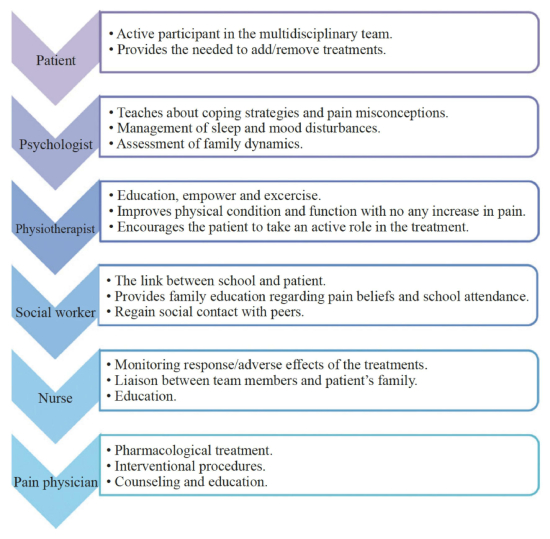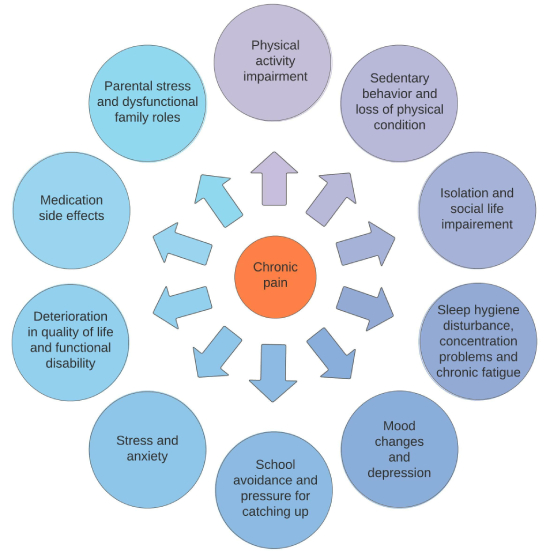Our model of care – Centre for Complex Pain
Pediatric chronic pain is a problem…
Chronic Pain in children has actually become quite common, ranging between 20% to 40% of occurrence worldwide, with 5% of children and adolescents across the world severely disabled by pain. Moreover, a national registry in the United States showed an increase of 831% in the admission of patients with non-organic causes of recurrent pain, from 2004 to 2010.
As shown in Figure 1, Children with chronic pain are at risk of having significant consequences like impairment in physical activity, reduced quality of life, school avoidance, anxiety, depression, decreased social life and poor sleep hygiene among others.
The psychological, physical and social sequelae have an impact not only on the patient but also friends and families with high parenting stress and dysfunctional family roles. Moreover, the consequences of children not receiving adequate treatment could mean the continuation of chronic pain into adulthood, as well as the possible development of pain in other areas of the body, and/or new psychological disorders.

However, there are solutions

Considering the multifactorial nature and far-reaching consequences of chronic pain, multiple healthcare providers of different specialties are needed to assess and treat patients with chronic pain conditions. A group of specialists working together, with shared treatment goals, represents the approach we use in helping patients with chronic pain conditions. Each team member’s role and treatment perspective is described in Figure 3.
The crucial role of the patient
Improved functioning is the most important outcome in the treatment of chronic pain and, interestingly, patients generally report significant improvement in function before reporting decreases in pain intensity. When a patient is empowered and participates actively in their treatment course within the interdisciplinary team, the treatment has a much higher success rate.
Conducting interdisciplinary pain evaluation and treatment sessions
The assessment of youth with chronic pain conditions is about evaluating pain parameters, sleep patterns, physical and social functioning, and the psychological impact of pain, so that every aspect treated contributes to improvement in function. Figure 2 shows how a regular appointment with the Complex Pain team is conducted, to consider all these aspects of treatment.
Source : Vega E, Beaulieu Y, Gauvin R, Ferland C, Stabile S, Pitt R, Gonzalez Cardenas VH, Ingelmo PM. Chronic non-cancer pain in children: we have a problem, but also solutions. Minerva Anestesiol. 2018 Sep;84(9):1081-1092. doi: 10.23736/S0375-9393.18.12367-4. Epub 2018 May 9. PMID: 29745621.
